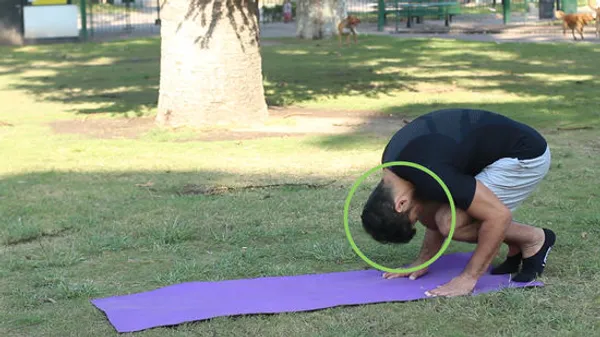Table of Contents
Welcome to Kizworld, your ultimate resource for learning How to do a roll. Whether you're a beginner looking to master the basics or an experienced athlete wanting to refine your technique, our comprehensive guide has everything you need. We'll take you through the steps of forward, side, and backward rolls, providing detailed instructions and tips to help you perfect your rolling skills. Get ready to enhance your physical fitness, improve your coordination, and impress your friends with your newfound rolling abilities!
How to do a Roll: A Comprehensive Guide for Beginners and Beyond
I. How to Do a Roll: A Step-by-Step Guide
How to Do a Roll: A Step-by-Step Guide
Step 1: Find a Safe Place to Practice
The first step is to find a safe place to practice rolling. A grassy area or a matted gym floor are both good options. Make sure the area is free of obstacles and that there is enough space to roll safely.
Related Post: The Best Gymnastics Mats and Tumbling Tracks
Step 2: Warm Up
Before you start rolling, it is important to warm up your muscles. This will help to prevent injuries and make the rolling process easier. Some good warm-up exercises include jumping jacks, running in place, and stretching.
Related Post: How to Improve Your Flexibility and Mobility with Gymnastics
Step 3: Start with a Forward Roll
The forward roll is the most basic type of roll. To do a forward roll, start by standing with your feet shoulder-width apart and your arms at your sides. Bend your knees and tuck your chin to your chest. Then, roll forward onto your back, keeping your body tight and your arms tucked in.
Related Post: How to Do a Front Flip
Step 4: Practice Side Rolls
Once you have mastered the forward roll, you can start practicing side rolls. To do a side roll, start by standing with your feet shoulder-width apart and your arms at your sides. Step to the side and bend your knees. Then, roll onto your side, keeping your body tight and your arms tucked in.
Related Post: How to Do a Cartwheel
Step 5: Try a Backward Roll
The backward roll is the most challenging type of roll. To do a backward roll, start by standing with your feet shoulder-width apart and your arms at your sides. Bend your knees and tuck your chin to your chest. Then, roll backward onto your back, keeping your body tight and your arms tucked in.
Related Post: How to Do a Backflip
Step 6: Perfect Your Technique
Once you have mastered the basic rolls, you can start perfecting your technique. This means practicing rolling smoothly and with control. You can also try rolling over different obstacles, such as cones or hurdles.
Related Post: How to Master the Basic Gymnastics Skills
II. Tips for Rolling
Here are a few tips to help you roll safely and effectively:
- Start slowly and gradually increase your speed as you become more comfortable.
- Keep your body tight and your arms tucked in.
- Don't be afraid to fall. Everyone falls when they are learning how to roll.
- Practice regularly to improve your technique.
III. Variations of Rolls
There are many different variations of rolls, including:
- Shoulder roll
- Somersault roll
- Cartwheel roll
- Breakfall roll
Each variation has its own unique benefits and challenges. Experiment with different variations to find the ones that you enjoy the most.
IV. Conclusion
Rolling is a fundamental skill that can benefit you in many ways. It is a great way to improve your balance, coordination, and agility. It can also help you to learn how to fall safely. With a little practice, you can master the art of rolling and enjoy all of the benefits that it has to offer.
V. Mastering the Roll: Techniques and Variations
Mastering the Roll: Techniques and Variations
Shoulder Roll
The shoulder roll is a basic roll that can be used to escape from a variety of holds and attacks. To perform a shoulder roll, start by tucking your chin to your chest and bringing your knees up to your chest. Then, roll onto your shoulder and continue rolling until you are back on your feet. The shoulder roll can be used to escape from a bear hug, a front headlock, or a side headlock.
- Tuck your chin to your chest.
- Bring your knees up to your chest.
- Roll onto your shoulder.
- Continue rolling until you are back on your feet.
Somersault Roll
The somersault roll is a more advanced roll that can be used to evade attacks and escape from dangerous situations. To perform a somersault roll, start by standing with your feet shoulder-width apart and your knees slightly bent. Then, tuck your chin to your chest and bring your knees up to your chest. Next, push off the ground with your feet and tuck your head and shoulders into your chest. As you roll, keep your arms and legs close to your body. When you land, roll onto your feet and continue running.
- Stand with your feet shoulder-width apart and your knees slightly bent.
- Tuck your chin to your chest and bring your knees up to your chest.
- Push off the ground with your feet and tuck your head and shoulders into your chest.
- Keep your arms and legs close to your body as you roll.
- When you land, roll onto your feet and continue running.
Cartwheel Roll
The cartwheel roll is a fun and challenging roll that can be used to impress your friends and family. To perform a cartwheel roll, start by standing with your feet shoulder-width apart and your arms at your sides. Then, take a step forward with your right foot and place your hands on the ground in front of you. Next, kick your left leg up and over your head and land on your feet. As you land, roll onto your back and continue rolling until you are back on your feet. The cartwheel roll can be used to escape from a variety of holds and attacks, and it can also be used to perform a variety of tricks.
Step 1 | Step 2 | Step 3 |
Stand with your feet shoulder-width apart and your arms at your sides. | Take a step forward with your right foot and place your hands on the ground in front of you. | Kick your left leg up and over your head and land on your feet. |
As you land, roll onto your back and continue rolling until you are back on your feet. |
Breakfall Roll
The breakfall roll is a roll that is used to break your fall and prevent injury. To perform a breakfall roll, start by tucking your chin to your chest and bringing your knees up to your chest. Then, roll onto your side and continue rolling until you are back on your feet. The breakfall roll can be used to break your fall from a variety of heights, and it can also be used to escape from a variety of holds and attacks.
- Tuck your chin to your chest and bring your knees up to your chest.
- Roll onto your side.
- Continue rolling until you are back on your feet.
VI. Safety First: Essential Precautions for Rolling
Safety First: Essential Precautions for Rolling
Choose a Safe Place to Practice
Before you start rolling, it's important to find a safe place to practice. This could be a gym, a park, or even your backyard. Make sure the area is free of obstacles and has a soft surface, such as grass or mats. You should also wear appropriate clothing and footwear, such as athletic shoes and comfortable clothing that allows you to move freely.
Here are some additional safety tips to keep in mind when rolling:
- Always warm up before you start rolling.
- Start slowly and gradually increase the speed and difficulty of your rolls.
- Don't try to do anything beyond your skill level.
- Be aware of your surroundings and other people in the area.
- If you feel pain, stop rolling and consult a doctor.
How to Do a Handstand: A Step-by-Step Guide for Beginners
Wear Proper Clothing and Footwear
When rolling, it's important to wear proper clothing and footwear to protect yourself from injury. This includes:
- Athletic shoes with good traction
- Comfortable clothing that allows you to move freely
- A helmet (optional but recommended)
- Knee pads (optional but recommended)
- Elbow pads (optional but recommended)
The Benefits of Gymnastics for Kids: Physical, Mental, and Social Development
VII. Tips for Rolling
Start Slowly
When you're first starting out, it's important to start slowly. Don't try to do anything beyond your skill level. Start with simple rolls, such as forward rolls and backward rolls. Once you've mastered these basic rolls, you can start to try more advanced rolls, such as side rolls and somersaults.
The Best Gymnastics Equipment for Home Use: A Comprehensive Guide
Keep Your Body Tight
When you're rolling, it's important to keep your body tight. This will help you to maintain control and prevent injury. Keep your core engaged and your muscles tight throughout the roll.
How to Improve Your Flexibility and Mobility with Gymnastics: A Step-by-Step Guide
Use Your Arms and Legs
Your arms and legs play an important role in rolling. Use your arms to help you push off the ground and to control your body. Use your legs to help you generate momentum and to keep your balance.
The History and Evolution of Gymnastics: From Ancient Greece to the Modern Olympics
Don't Be Afraid to Fall
Falling is a natural part of learning how to roll. Don't be afraid to fall. If you fall, just get back up and try again. The more you practice, the better you'll become at rolling.
How to Choose the Right Gymnastics Leotard: A Guide for Parents and Athletes
Practice Regularly
The best way to improve your rolling skills is to practice regularly. Try to practice at least 3 times per week. The more you practice, the better you'll become at rolling.
The Most Common Gymnastics Injuries and How to Prevent Them: A Comprehensive Guide
VIII. Rolling for Fitness and Fun: Benefits and Applications
Rolling for Fitness and Fun: Benefits and Applications
Rolling is a fundamental movement skill that offers numerous benefits for fitness and fun. Whether you're a gymnast, a martial artist, or simply someone looking to improve your physical well-being, rolling can be an excellent addition to your routine. In this section, we'll explore the advantages of rolling and discuss how you can incorporate it into your fitness and recreational activities.
Benefits of Rolling for Fitness:
- Improved Balance and Coordination: Rolling helps enhance your balance and coordination by challenging your body to maintain control and stability while moving in different directions.
- Increased Flexibility: Rolling stretches and loosens your muscles, promoting greater flexibility and range of motion.
- Strengthened Core Muscles: Rolling engages your core muscles, including your abs, obliques, and back muscles, helping to strengthen and stabilize your torso.
- Reduced Risk of Injury: Rolling can help improve your body's ability to absorb impact and reduce the risk of injuries, especially during falls or other sudden movements.
- Improved Motor Skills: Rolling is a fundamental movement skill that can help improve your overall motor skills and coordination.
Applications of Rolling for Fun:
- Gymnastics: Rolling is a core skill in gymnastics, used in various routines and exercises.
- Martial Arts: Rolling is a common technique in martial arts, used for evading attacks, transitioning between positions, and gaining momentum.
- Parkour: Rolling is an essential skill in parkour, allowing practitioners to safely navigate obstacles and perform complex movements.
- Dance: Rolling can be incorporated into dance routines to add fluidity and grace to performances.
- Recreational Activities: Rolling can be enjoyed as a fun and challenging activity for people of all ages, whether it's rolling down a hill, playing with children, or simply practicing in a safe environment.
Whether you're looking to improve your fitness, learn a new skill, or simply have some fun, rolling is a versatile and beneficial activity that can be enjoyed by people of all ages and skill levels. So, get ready to roll and experience the numerous advantages it has to offer!
To learn more about rolling and how to incorporate it into your fitness routine, check out our comprehensive guide on How to Do a Roll.
IX. Conclusion
Rolling is a versatile skill that can benefit people of all ages and fitness levels. Whether you're looking to improve your athletic performance, learn self-defense, or simply have fun, mastering the basics of rolling is a great place to start. With practice and dedication, you'll be able to perform rolls with confidence and ease. So, what are you waiting for? Start rolling today and unlock a world of new possibilities!